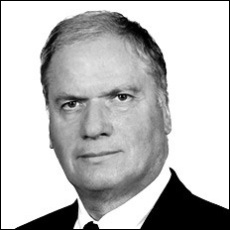Articles and News
De Beers CEO: “If You’re Selling Forever, You Have To Think Long-Term” | January 08, 2015 (0 comments)

New York, NY—Philippe Mellier, CEO of the De Beers Group of Companies, addressed a gathering of top Forevermark retailers and suppliers here last night. In his remarks, he reviewed the brand’s performance as outlined in its 2014 Diamond Insight Report, and reminded retailers that, “We’re selling more than beautiful gems. We’re marketing the concept of forever.”
As such, the industry is working to influence the future, which he acknowledged isn’t easy, because of both the long complex supply chain for diamonds, and changing consumer attitudes. There’s also greatly increased competition from other luxury categories such as travel and electronics. But the Forevermark brand, he says, represents the best way to do that, by emphasizing both the emotional significance of diamonds and its ethical sourcing.
De Beers is investing heavily in diamond production. Supplies are dwindling but De Beers has sunk upwards of $30 billion into both exploration of new sources and extending the life of existing mines in Botswana, Namibia, South Africa, and Canada. He also lauded the success of De Beers’ partnership-based models, celebrating 45 years in Botswana with Debswana, the company owned 50/50 by De Beers and the Government of Botswana, and a similar situation of 20 years’ duration in Namibia with Namdeb, also a 50/50 joint partnership.
“These relationships are the world’s most successful public/private partnerships,” he told the audience.
The world’s appetite for diamonds is better than ever, he said. Even the most pessimistic scenario still sees major growth for diamonds. The United States, of course, is the world’s leading market, accounting for 40% of diamond sales, but major growth is coming from China, India, and other emerging markets. Indeed, in a survey of Forevermark U.S. retailers, 45% of respondents had increased diamond sales of at least 5% or higher over last year’s holiday figures. Forevermark sales were in line with overall diamond sales, but at a higher margin, said Mellier. And consumers are showing a marked preference for branded engagement rings: about 7% of U.S. consumers expressed a preference for a branded diamond in 2002, compared with about 35% in 2013.
Forevermark, meanwhile, now stands at 400 U.S. doors and 1,500 doors around the world, and last year sold more than 350,000 inscribed diamonds, an 47% increase over 2013 figures.
But there are challenges ahead. The increasing polarization of wealth between have and have-not will impact diamond and bridal jewelry sales, and poor returns on trade-ins can undermine consumers’ perception of value.
Of the credit crunch that has been choking profits in the supply chain, Mellier believes it’s a matter of balance. Current prices of rough remain high, creating very tight margins for polished suppliers who can’t pass along higher prices to buyers, but Mellier believes that with proper balancing of supply and demand, the market will straighten out. Supply is expected to plateau around 2020 and begin declining after that.
Prices have risen gradually, he says; they’re not rocketing 20% in a year, and as such, consumers have been able—and thus far willing—to absorb the price increases. As long as any increases remain gradual, he doesn’t see a tipping point where consumers will turn away from diamonds.
But that requires staying on top of the message that diamonds are forever, because the Millennial buyer—the primary audience for bridal jewelry—grew up in a throwaway world, where everything from clothes to electronics have a short shelf life of desirability.
“I see it in my own home,” Mellier told The Centurion, referring to his own children who are Millennial age. “Always new clothes, new electronics, even new boyfriends.” But, he says, though they may not admit it, in many ways Millennials are more traditional than earlier generations and they are very much receptive to the emotional aspect of diamonds. And, of course, the ethical sourcing, which he says consumers are proving more than willing to pay a 10% to 15% premium to have.
In concluding his general remarks, Mellier told the gathering, “If you’re selling ‘forever,’ you have to think long-term.”
Click here to access his presentation and that of other De Beers executives.







